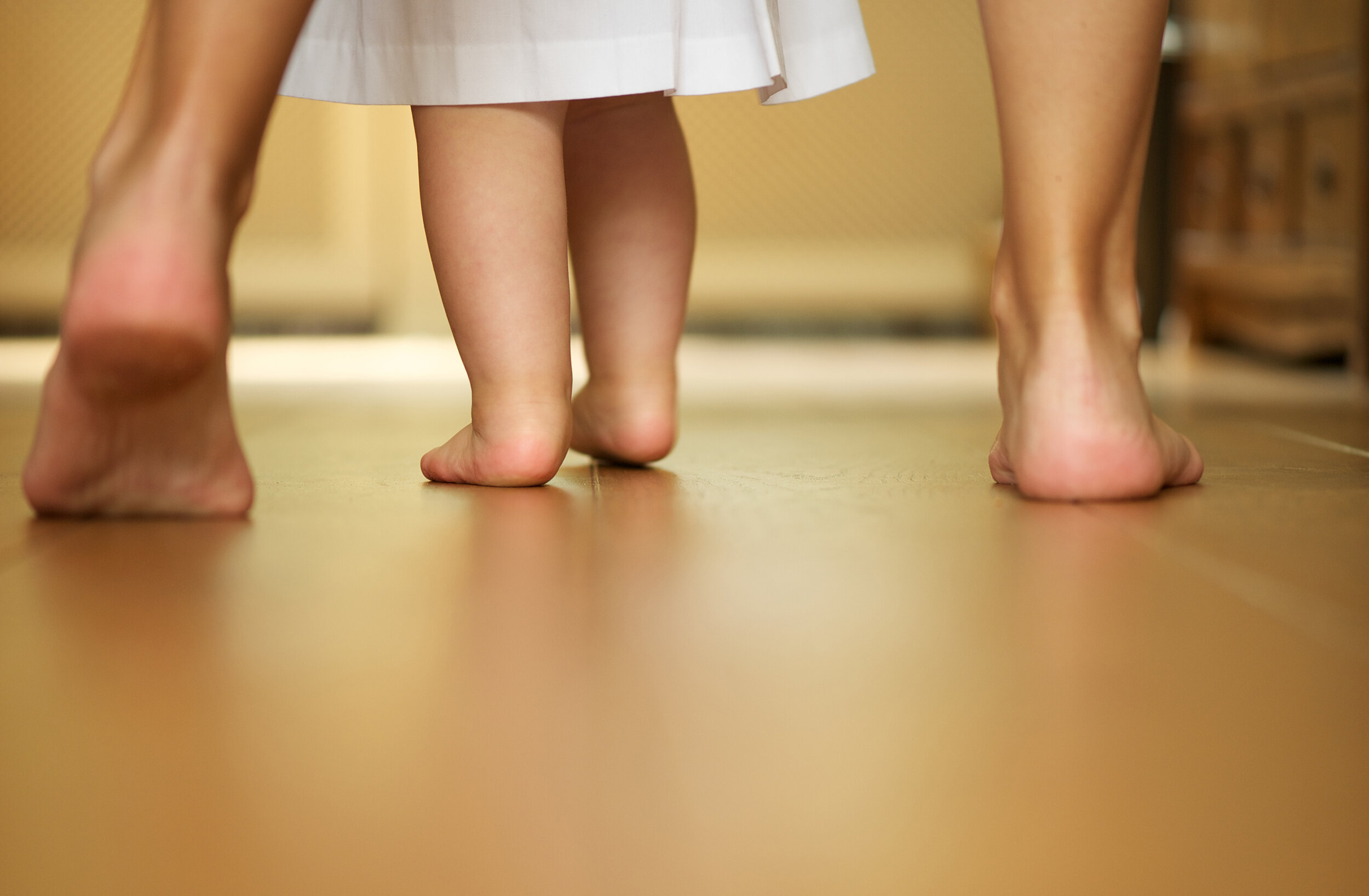Why isn’t my child walking yet?
Oh those first steps are just such a delight for both Parents and our clever little bubs! I remember my two kiddos first steps so fondly. It’s only natural as parents we begin to worry about our “little one” being late to walking when we notice all their peers trotting along. Let’s clear up some discussions around what is normal and when there is consideration for concern.
The range for what is considered a normal time frame for a child taking their first steps is super large. We can see babies as little as 8 months take off and also toddlers as old as 18 months just begin to walk. Both of those time frames are within the normal parameters of a child’s first steps.
How to get on the front Foot!
Taking their first steps is one of many other milestones along a child’s development through each growth stage. Take a moment to consider if your child has achieved some of these other growth milestones.
a) Are they able to hold their head upright? This milestone is normally achieved around 3-4 months
b) Can they follow movement with their eyes? Around 6-8 months we begin to see them track with their eyes and be able to follow objects.
c) Are they able to sit upright by 10 months? This milestone is imperative for trunk development and gross motor skills.
d) Have they commenced crawling by around 8-9 months? Not all babies crawl with normal sequencing. Some commando crawl and some shuffle along on their bottoms in the seated position. Variations do happen, but movement around this time should occur.
e) Will they stand up on both feet with assistance of you holding their hands at 12 months?
In cases where they have not achieved these milestones it is worth having them assessed by your Paediatrician. In most cases, there may be a slight delay, but when it comes to our kids its better to be safe and have it looked at by a professional.
Have a look at your child’s muscle tone! Look closely at the muscles of the leg. Are they very tight and firm…..or the opposite very very squishy? Muscle tone can play a important role in your child’s ability to weight bear. It can limit the range of motion of the foot & ankle in a child with hypertonia (tight muscles) and at the opposite end of this spectrum can provide a very unstable lax base of support with low muscle power in a hypotonic (low muscle tone) for walking. If their muscle tone doesn’t appear natural or you are unsure what natural even looks like, please have them assessed by Podiatrist or a Paediatrician.
Look closely at your child’s foot position when they weight bear and then again when they are sitting. It is quite normal for a toddlers foot to appear fairly flat in weight bearing because a lot of the bones are yet to turn from cartilage to ossified solid bone mass There is also lots of fatty padding in a toddlers foot which gives it a more flat appearance. However, if the child’s foot appears rocker bottom shaped in non weight bearing (extremely flat arch) or they have toes that deviate to one side of the foot or the other this worth investigation by a Podiatrist.
Now look at their hips. When they stand are they bearing weight evenly between both legs? Sometimes hip dysplasia can go undetected at a younger age and this can then go on to delay the child’s ability to load. If your child leans to one side and favours one leg load above the other have this assessed by your Physiotherapist, Podiatrist or Paediatrician.
In most cases a small delay to 18 months is generally more behavioural. Some kids just cruise back and take their time deciding when they might like to get up and walk. We should be seeing them however standing and supporting themselves on furniture and being able to hold this position. This is part of their process towards neural feedback systems that prepare them for taking those first independant steps.
If your child is approaching 20 months and has not begun to take their first steps my advice would be to have them assessed by a Paediatric Podiatrist or Physiotherapist who will be able to distinguish if further intervention is necessary.


